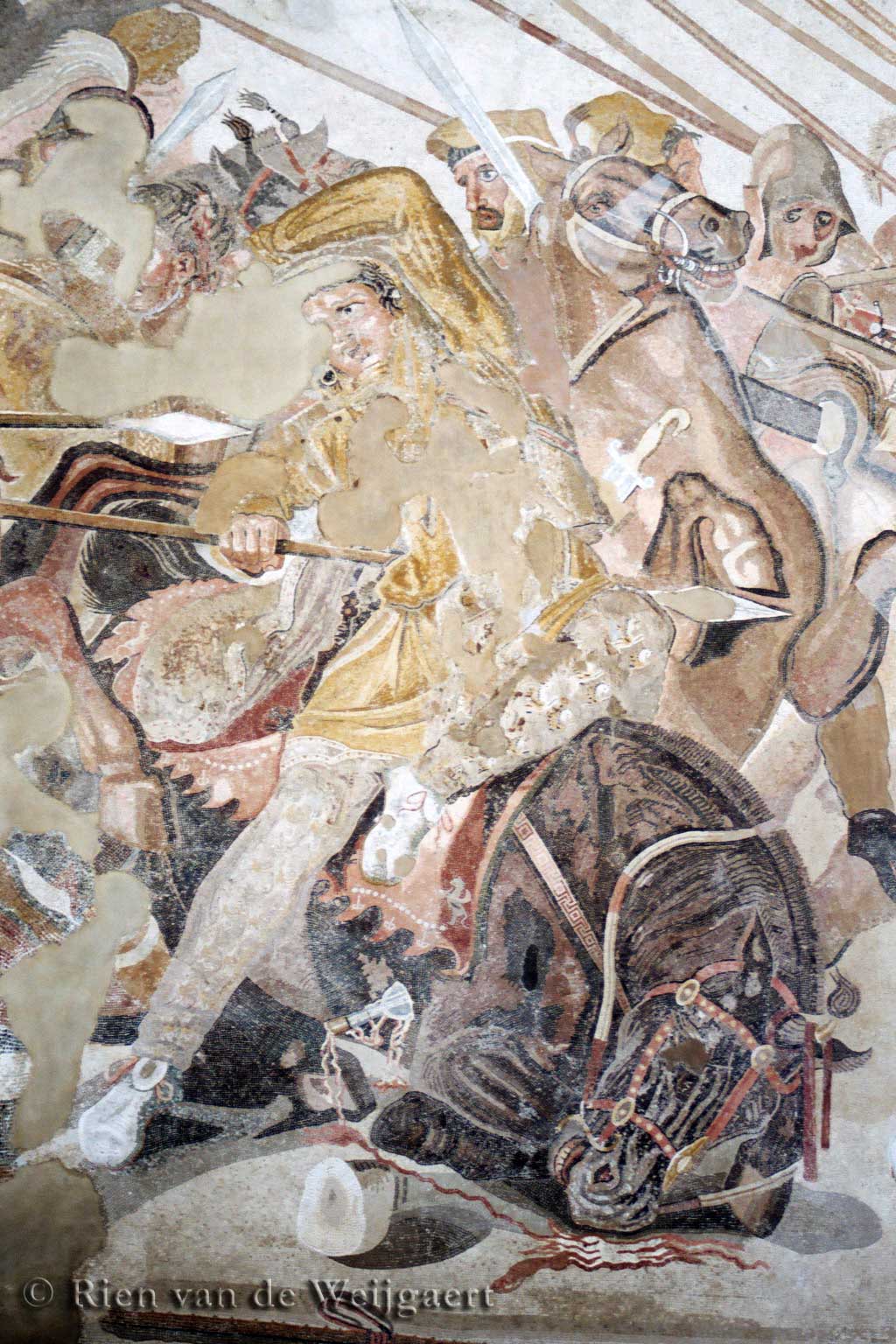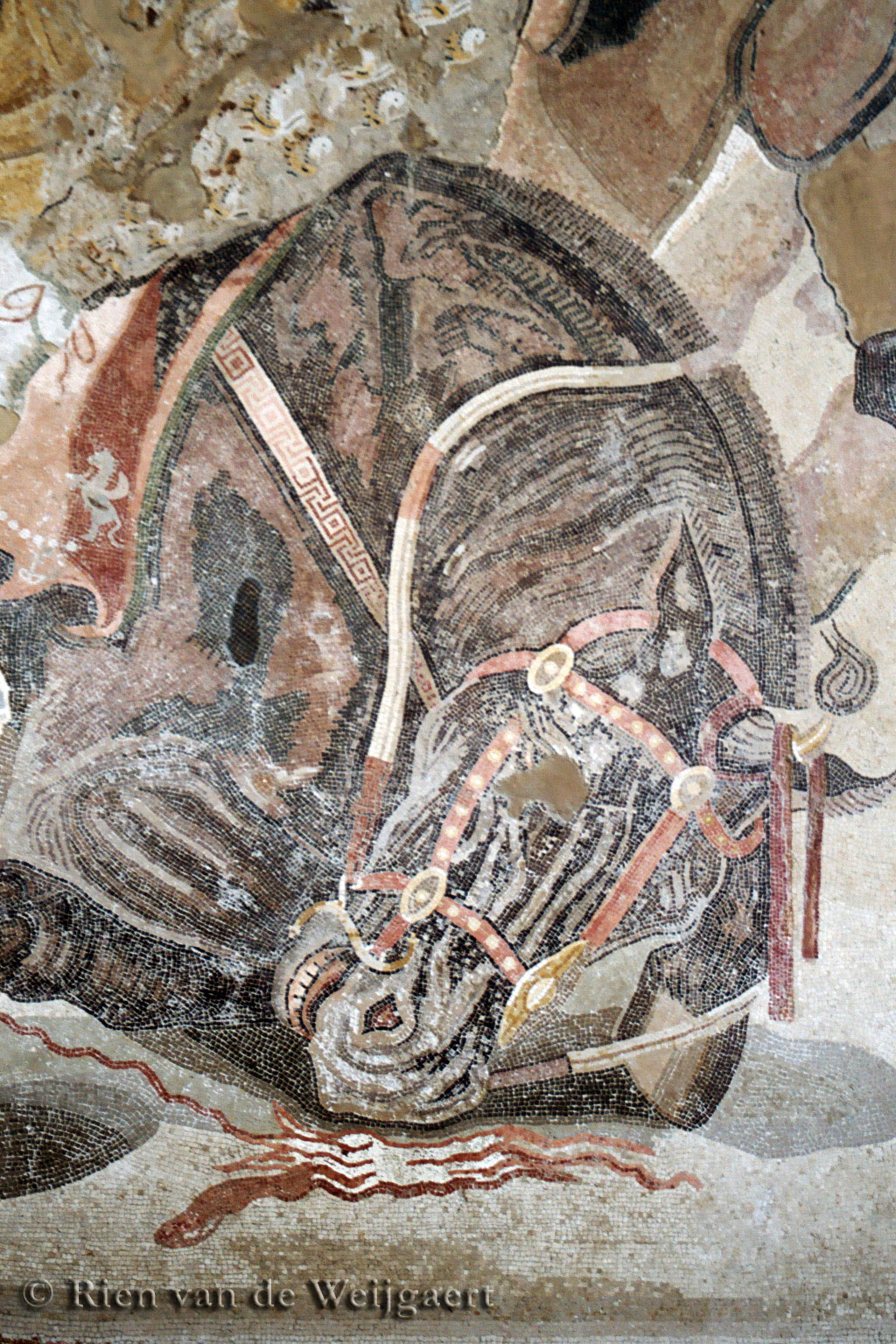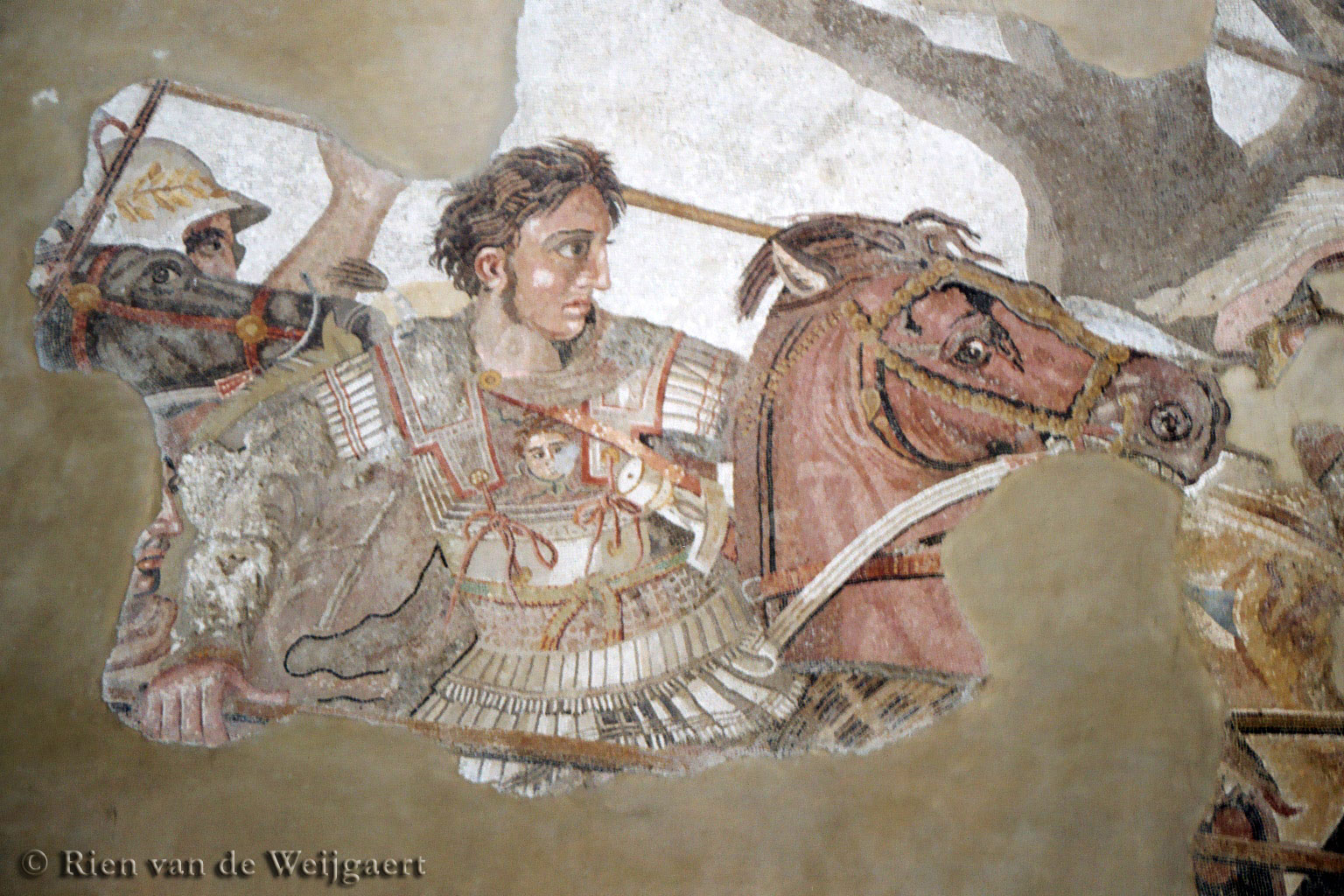
The Great King and his lifelong companion:
Alexander III of Macedonia and Bucephalus
This page presents my photographic report on the Alexander mosaic. Without doubt one of the most impressive and greatest works of art from antiquity, quite unmatched in the history of Roman art. To testify of this some of the images stemming from my photographic journey along the Bay of Napoli, June 2004.
Rien van de Weijgaert
Despite Darius' great qualities as organizer and commander, he had the bad luck to have as his opponent world history's most impressive commander and conqueror. It was the genius and the utter fearlessness of Alexander which shifted the balance completely to the Greek side. Leading the charge of his heavy cavalry and breaking through the Persian lines, he fought his way into the centre of the Persian army, towards Darius. A bloody fight erupted around the chariot of Darius and though Alexander got injured at his thigh it was Darius who could not hold the pressure. He fled from the battlefield.
The word about Darius' flee spreads out over the battlefield, and the Persian left and right wing collapse while the Macedonians push ruthlessly after having noticed Alexander forced a gap in the Persian formation. The victory is total. Darius managed to get away thanks to his fast chariot, but his mother, wife, and children are captured by Alexander. Sources name an estimated 110,000 Persian soldiers, 10,000 Greek mercenaries and 450 Macedonians being killed in the battle (10,000 to 20,000 casualties may be a more realistic, if still dreadful number).
The Battle of Issus has since become one of world history's main events, a major stage in the Alexander's rush towards conquest of the known world, establishing him as the greatest and most impressive conqueror of all time, opening a new stage in human history.

The Alexander Mosaic:
Depicts moment of victory in Battle of Issus on which Alexander has broken through to Darius, who defeaten and shocked is on the verge of fleeing.
From the Museo Nazionale, Naples, Italy.
Origin: Exedra looking onto Central Peristyle, House of the Faun, Pompeii.
Dated from the late 2nd century. B.C., copy of a painting dated to c. 300 B.C
The mosaic was copied from an earlier original painting by Philoxenes (around 300 B.C.). In its entirety the mosaic measures 5.82 x 3.13m, and is made of over half a million tesserae (small mosaic tiles). It is in opus vermiculatum, with over one and a half million tesserae, none larger than 4 mm., in four colors: white, yellow, red, and black. The minuteness of the tesserae enables incredibly fine detail and painterly effects, including remarkable portraits of Alexander and Darius. It was discovered in the largest house in Pompeii, the House of the Faun, in a room overlooking the central peristyle garden of the house. It is thought that this house was built shortly after the Roman conquest of Pompeii, and is likely to have been the residence of one of Pompeii's new, Roman, ruling class. The mosaic highlights the wealth and power of the occupier of the house.
The border of this huge mosaic consists of large stones in a dentate pattern . In the corners are rosettes. Within the border along the bottom of the picture is a blank brown stripe, which some consider to be part of the picture, balancing the white expanse of sky at the top, while others argue that it is simply part of the frame.
The photograph above shows the main part of the mosaic, illustrating both Alexander and Darius at their moment of confrontation at Issus (photo: Rien van de Weijgaert, Napoli, June 2004).
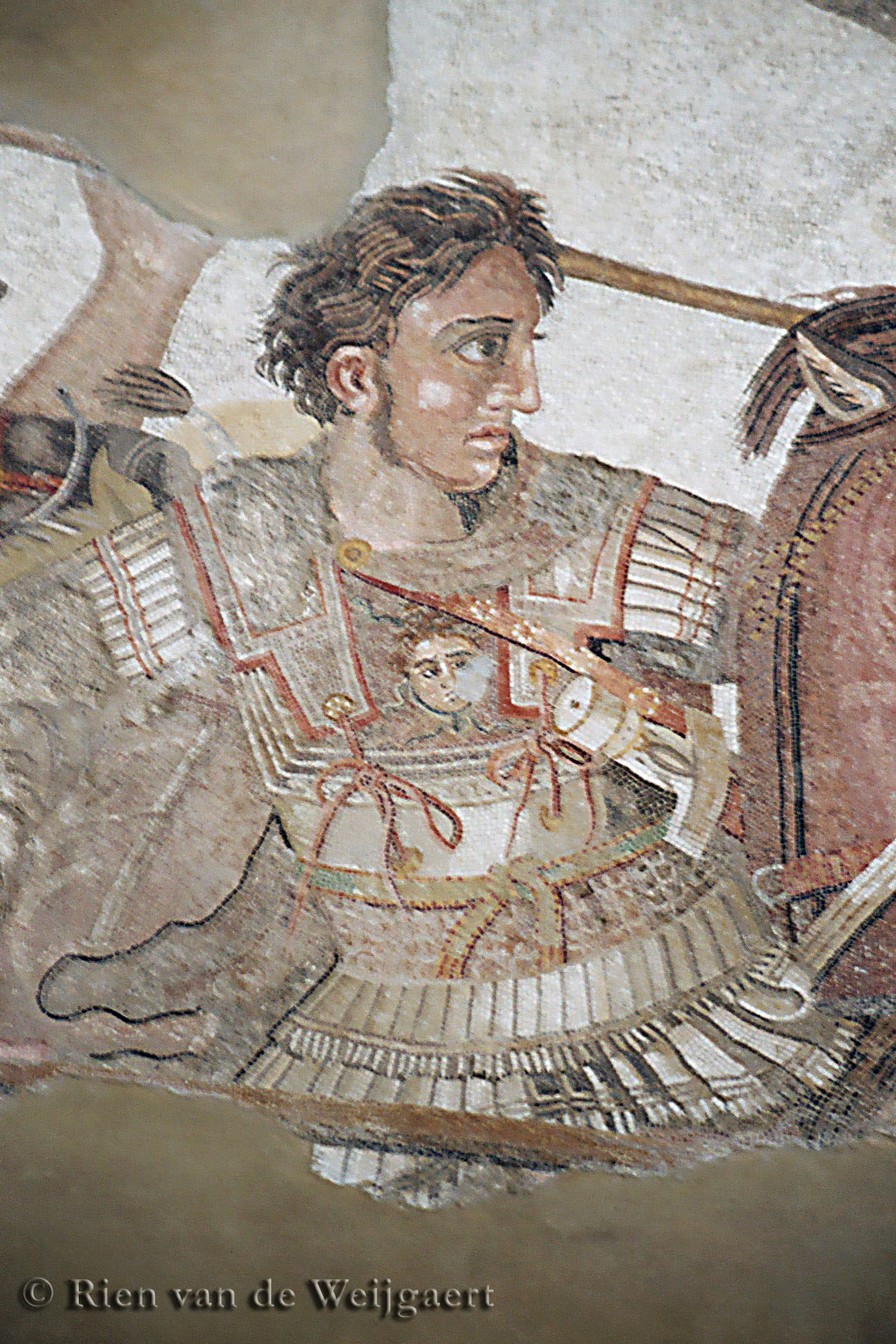 Traditionally the scene of the Alexander Mosaic is hold to represent the turning-point at
Issus when Darius fled the battle; but Philoxenus, the artist from whose painting the
mosaic was copied, may have incorporated elements from other battles. Alexander's personal
moment of peril seems borrowed from the Battle at the Granicus (334 B.C.), and the
confrontation also has echoes of the Battle at Gaugamela, Alexander's ultimate victory
(331 B.C.).
Traditionally the scene of the Alexander Mosaic is hold to represent the turning-point at
Issus when Darius fled the battle; but Philoxenus, the artist from whose painting the
mosaic was copied, may have incorporated elements from other battles. Alexander's personal
moment of peril seems borrowed from the Battle at the Granicus (334 B.C.), and the
confrontation also has echoes of the Battle at Gaugamela, Alexander's ultimate victory
(331 B.C.).
The composition of the mosaic is dominated by the two protagonists: On the left, Alexander, with his head uncovered, rushes forward on his horse Bucephalus. He holds a spear with which he has skewered a Persian soldier, who has rushed to the defence of Darius. With Alexander appear his helmeted Macedonian soldiers, although little remains of them due to damage of the left side of the mosaic. On the right Darius, wearing a Persian cap, stretches out his hand to his wounded defender, while his charioteer whips the horses to flee toward the right. Around him are his Persian soldiers who mill in confusion in the background, their faces filled with fear and determination. One Persian, however, to the right of the dying defender of Darius, is intent upon Alexander, and holds his sword in his hand, ready to attack.
There are many details which emphasize the terror and confusion of the battle. The horse of the Persian defender of Darius collapses beneath him while he writhes in agony on Alexander's spear. Below Darius in his chariot, a Persian soldier, staring in horror at this scene, attempts to hold a rearing horse. The hindquarters of this horse project into the middle ground of the picture, giving it a sense of depth. To the right, a soldier is being crushed under the wheels of Darius' chariot. His face is reflected in the shield which he holds. Further to the right appear the terrified horses of the chariot team, trampling upon another unfortunate Persian.
The composition of the mosaic is dominated by diagonals. The center is dominated by the intersecting diagonals of the Persian speared by Alexander and the Persian restraining the rearing horse. Two other sets of intersecting diagonals are provided by the figures of Darius and his charioteer and by Alexander and the wounded Persian. The lances in the background of the picture also carry on the diagonal motif.
The setting of the battle is very stylized. In the background appears a tree with bare twisted limbs whose diagonals continue the unifying compositional motif of the mosaic. The tree also serves as a formal vertical counterweight to the Persian king and his charioteer, who rise above the battle fray. In the foreground are discarded weapons and rocks, which serve to define the space between the viewer and the battle scene.
Darius in peril
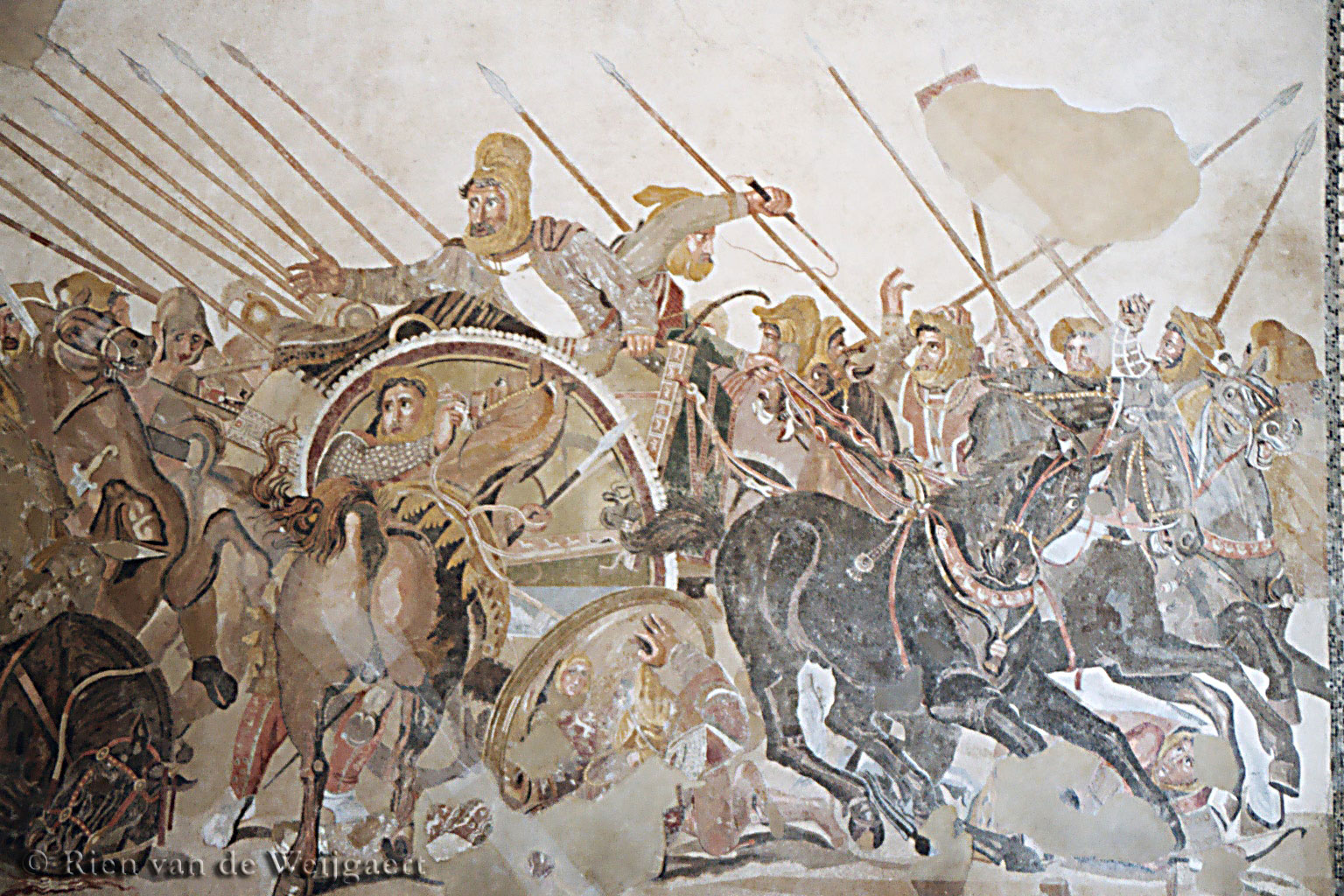
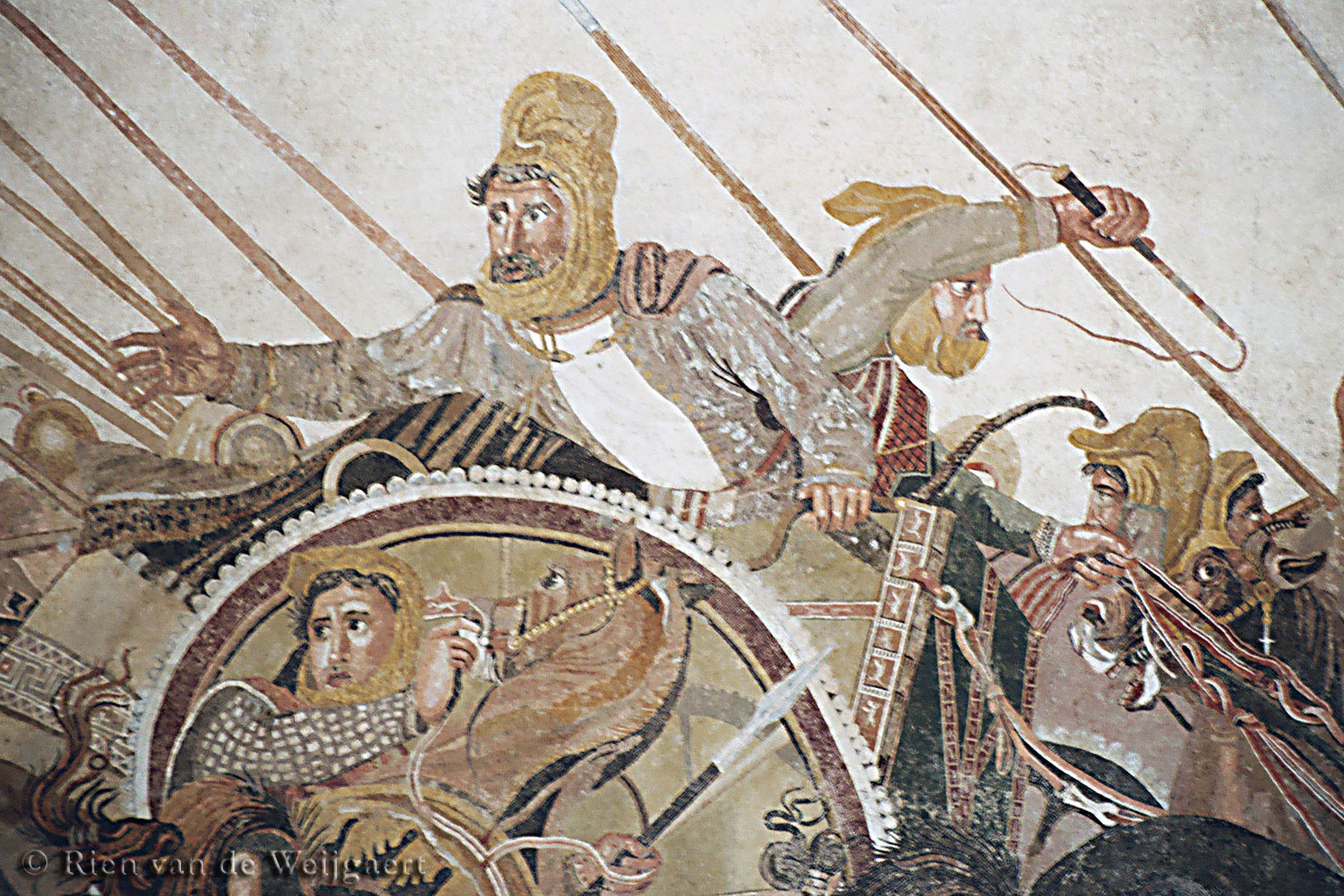
The Alexander mosaic is thought to be based on a painting which Philoxenus of Eretria created for King Cassander of Macedonia. The painting is described by Pliny the Elder as representing "the battle of Alexander with Darius." Certain inconsistencies in the mosaic point to its derivation from another source. In the center of the composition appears a helmeted head to the right of the rearing horse. Two lance shafts come from the left and abruptly stop behind this he?d. To the right of the same head appears a head of a horse and beneath this are the hindquarters of another horse, neither of which is logically completed. Among the four horses of Darius' chariot there are parts of a white horse which do not fit together anatomically. Above these horses is a Persian soldier who appears to have two right hands, one on his head and the other raised in the air. These details provide evidence that the mosaicist misunderstood details of the original.
chaos around Darius' chariot
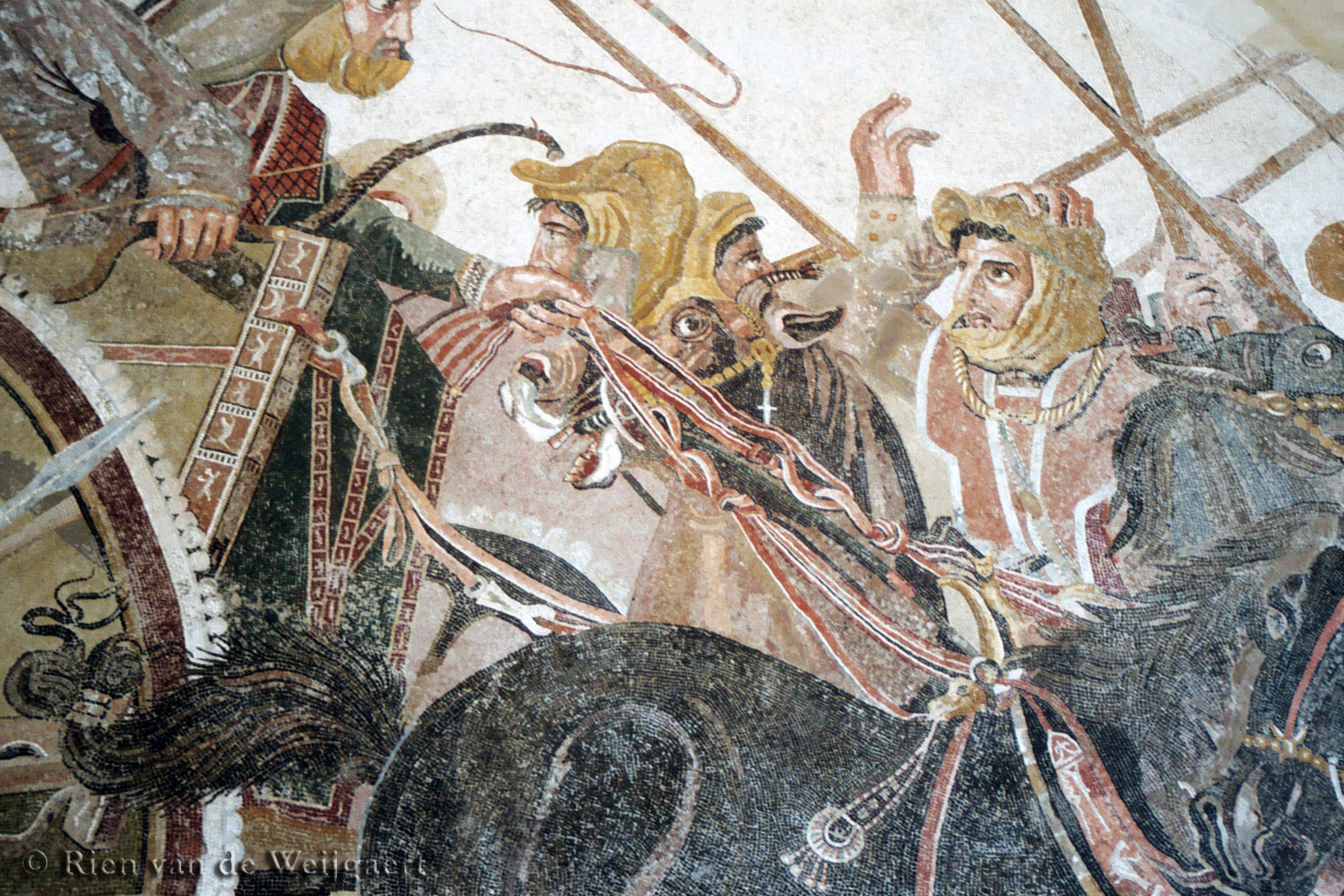
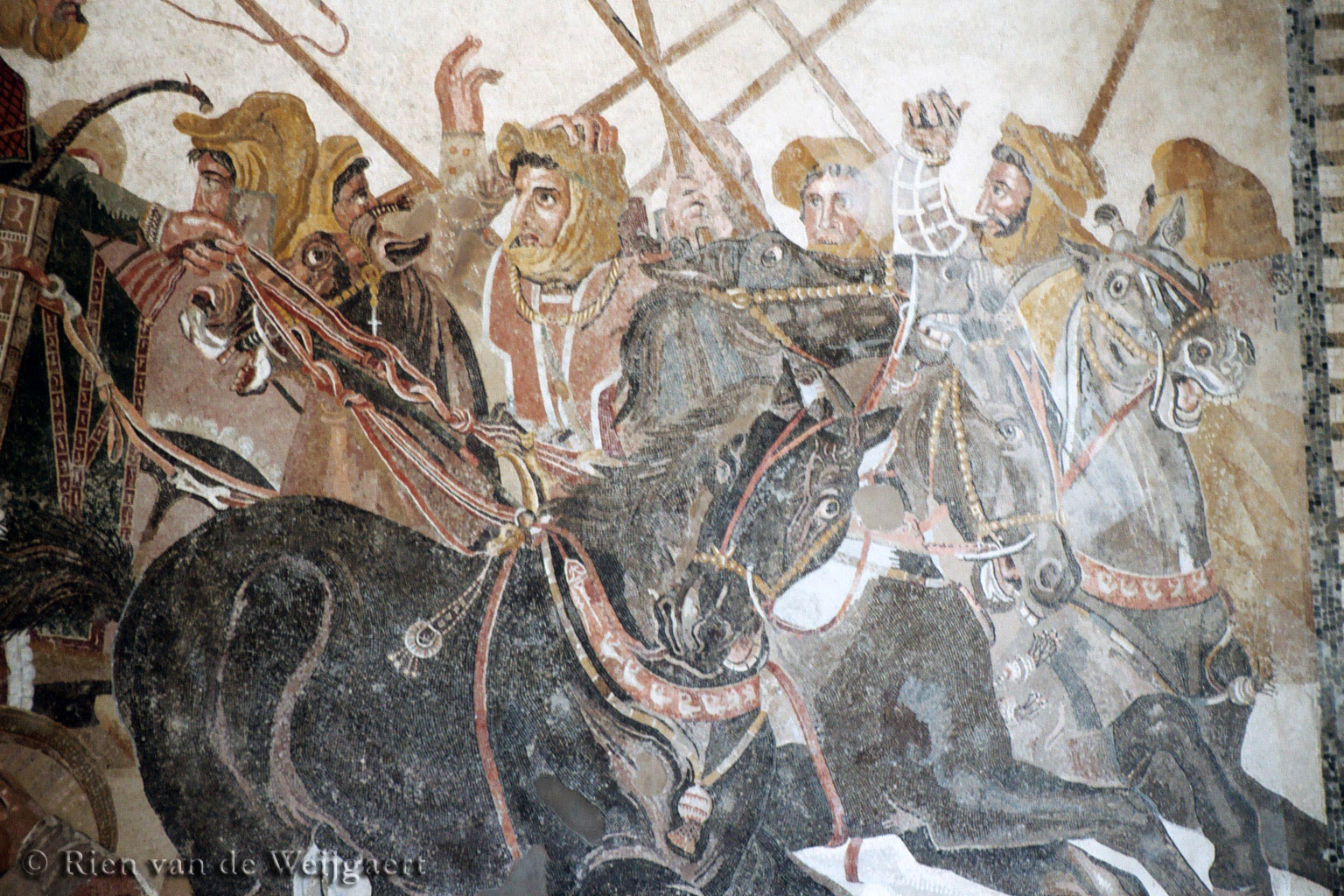
Nevertheless, the overall effect of the mosaic is masterful. The expert blending of the colors of the tesserae and the careful control of the overall composition create a scene which comes to life with all the horror and confusion of battle. Truely one of the greatest works of art in human history.
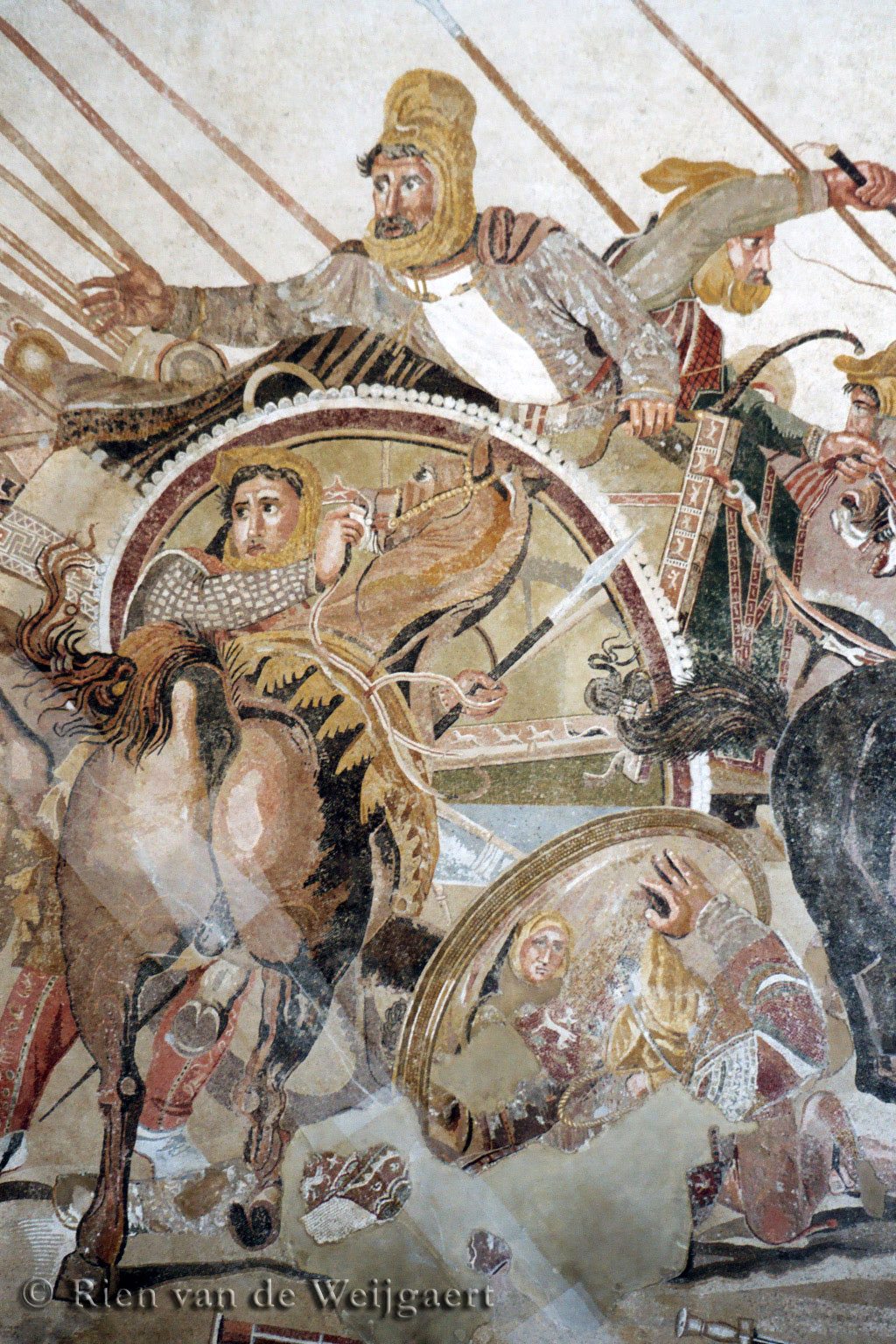
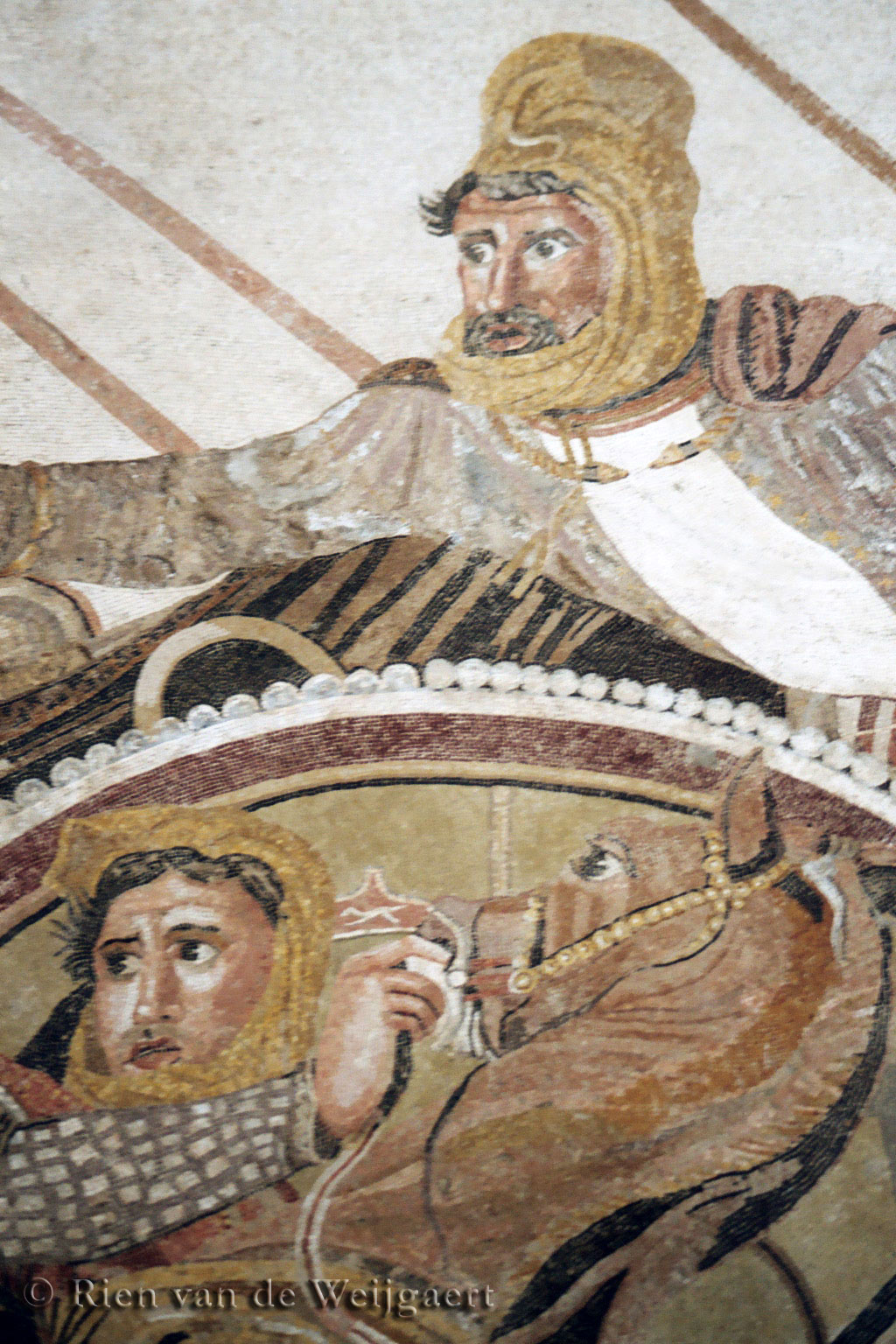
while Darius flees ...
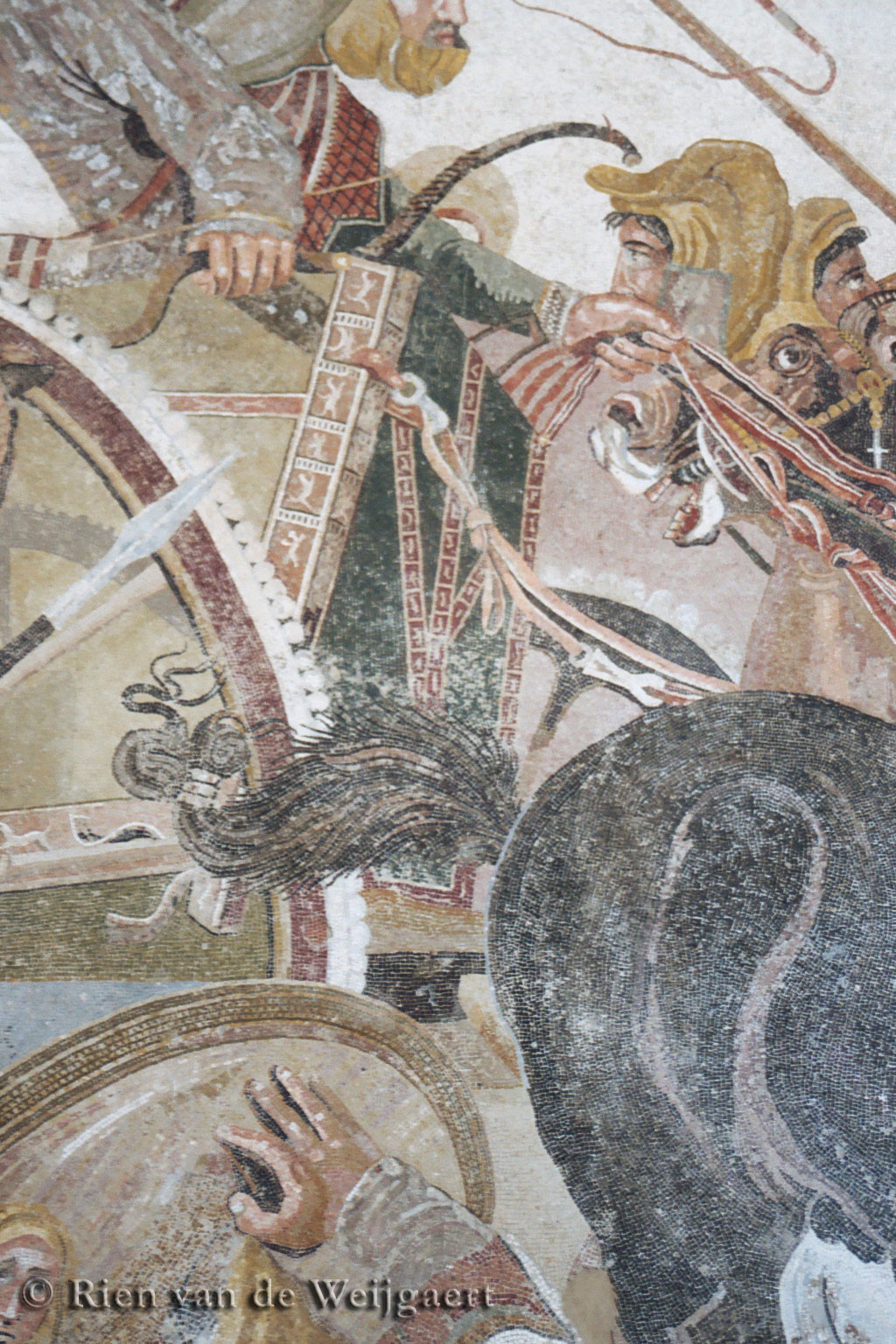
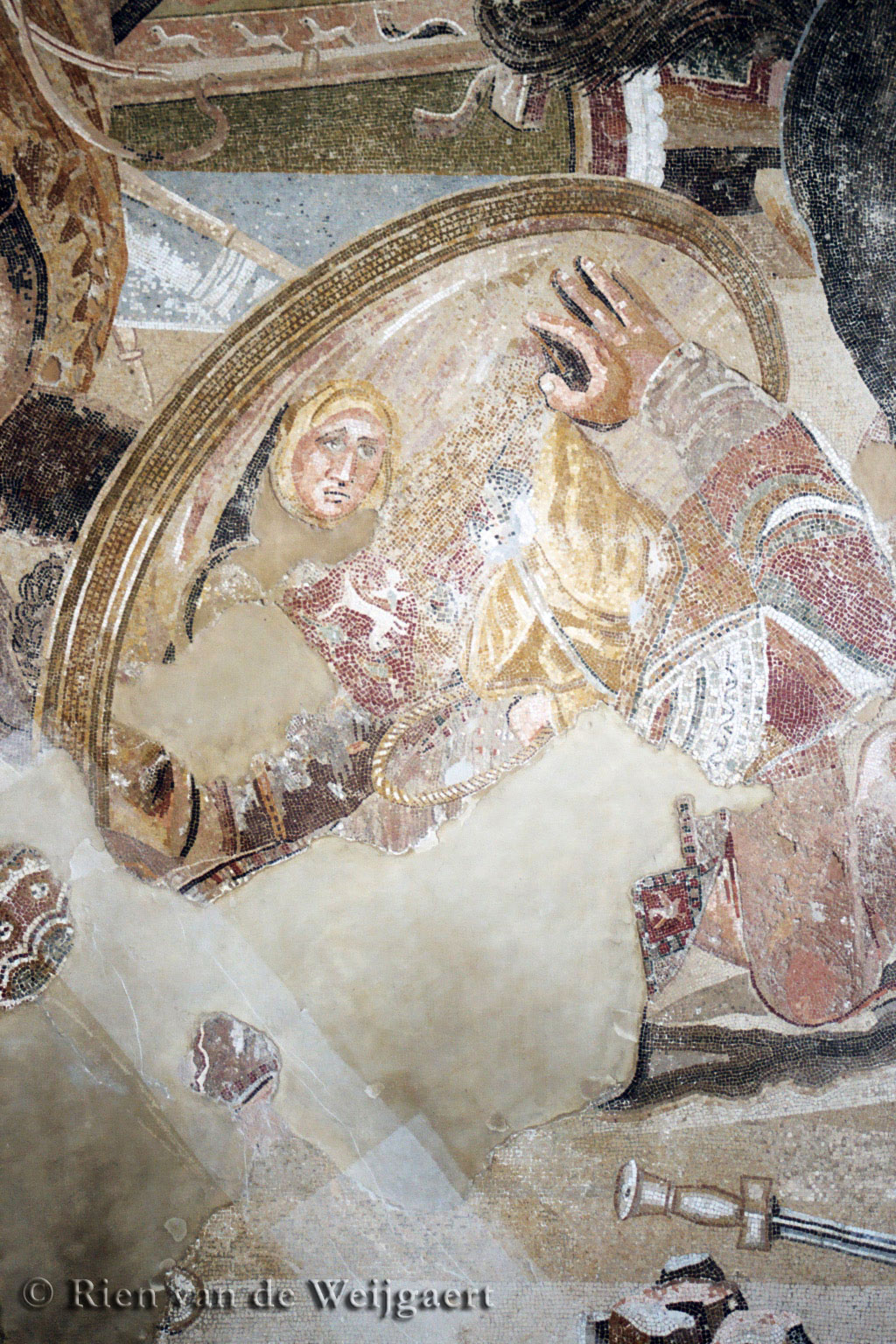
desolation and destruction descends upon his regiments ...
